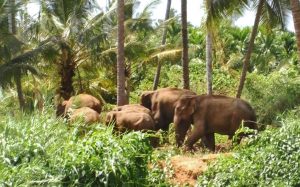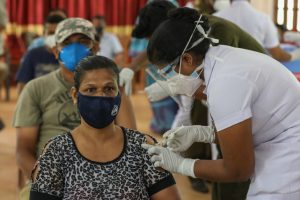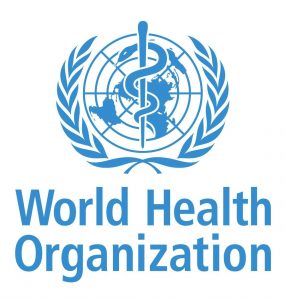Today’s Current Affairs: 27th March 2024 for UPSC IAS exams, State PSC exams, SSC CGL, State SSC, RRB, Railways, Banking Exam & IBPS, etc
Table of Contents
Captive Elephant (Transfer or Transport) Rules, 2024:

The Union Ministry of Environment, Forest and Climate Change recently notified Captive Elephant (Transfer or Transport) Rules, 2024.
- Captive Elephant (Transfer or Transport) Rules, 2024 lays down the procedure to be followed for the transfer of captive elephants within a State or between two States.
- The notification authorises the CWW of States and UTs to permit or reject the transfer of captive elephants.
- The CWW shall permit the inter and intra-State transfers if the owner of the elephant is no longer in a position to maintain it or if the animal will have a better upkeep than in the present circumstances.
- The transfer of captive elephants won’t be permissible unless the genetic profile of the animal has been entered in the electronic monitoring application of the MoEFCC (Ministry of Environment, Forest and Climate Change).
- The application for transfer of captive elephants should be made to the deputy conservator of forests (DCF), having jurisdiction over the area where the elephant is registered.
- The DCF will conduct an inquiry and physical verification of the facility where the elephant is presently housed, and also the facility where the elephant is proposed to be housed and obtain a certificate of a veterinary practitioner, and then forward the details to the CWW, who within seven days will accept or reject the transfer.
Post-Vaccination Immunity : Study

In recently published a review it was found that only a few vaccines provide long-lasting protection spanning more than 20 years.
Post-vaccination immunity Process:
- In the fundamental immunological mechanism, our lymph nodes first produce the memory B cells that confer long-term protection against a disease.
- These cells ‘memorise’ the antigen the vaccine has delivered. When a foreign object like a virus enters the body bearing the same antigen, the B cells will trigger the production of a large number of potent antibodies to destroy it, removing the infection.
- These memory B cells require T cell support, and only vaccines that stimulate T cells can also induce the body to produce them. Further, not all vaccines – including the polysaccharide typhoid and the pneumococcal vaccines – prompt the body to make B cells.
- In some cases, frequent boosters are required to enhance the duration of immunity the cells confer, ranging from six months to a few years.
- Also, vaccines trigger the production of memory B cells to different degrees, plus having memory B cells alone does not guarantee protection.
- Another essential immune cell, called long-lasting plasma cell (LLPC), migrates from the lymph node to the bone marrow and may endure for decades.
- LLPCs are the main immunological factor in vaccine-induced immunity. Every vaccine tries to create long-lasting plasma cells for lifelong protection.
- The measles and rubella vaccines produce these cells in the bone marrow. However, some potent vaccines, such as the mRNA COVID-19 shots, fail to activate these cells in the bone marrow.
- To provide long-term protection, then, vaccines must generate memory B cells and LLPCs in the bone marrow.
- Different vaccines differ in their ability to produce these cells, explaining the disparity in their durabilities.
Fair Share for Health And Care Report : WHO

The World Health Organization (WHO) released a new report titled- Fair Share for Health and Care report, addressing the gender gap in global healthcare.
Key Highlights of the Report:
- Women comprise 67% of the paid global health and care workforce.
- Additionally, they perform an estimated 76% of all unpaid care activities.
- This highlights significant gender disparities in both paid and unpaid care work.
- Women in low- or middle-income countries could be USD 9 trillion better off if their pay and access to paid work were equal to that of men.
- Women are not adequately represented on decision-making tables.
- Women are overrepresented in lower-status roles, comprising the majority of nurses and midwives.
- They are, however, underrepresented in leadership roles. Medical specialties are still dominated by men.
- Women made up 25% to 60% of doctors but between 30% and 100% of nursing staff across 35 countries.
- Chronic underinvestment in health and care work has led to a vicious cycle of unpaid care work, reducing women’s participation in paid labour markets, hindering economic empowerment, and impeding gender equality.
- Pay gaps limit women’s investment in their family and community, which is where they are likely to reinvest.
- Globally, on average, 90% of women’s earnings are directed towards their families’ well-being, compared to only 30-40% of men’s.
- Women in healthcare disproportionately experienced higher levels of gender-based violence.
- According to some estimates, a quarter of workplace violence across all sectors of the globe occurs in healthcare.
- At least half of all employees in the healthcare sector have reported experiencing violence at some point in the workplace.
- In India, women spent around 73% of their total daily working time (that is, the combined average time spent on unpaid and paid work recorded through national daily time-use surveys) on unpaid work, compared to men who spent around only 11% of their daily working time on unpaid work.
- In the United Kingdom, nearly 4.5 million people took on unpaid work during Covid-19, 59% of whom were women, with nearly 3 million working simultaneously.
Cinematograph (Certification) Rules, 2024:

The Ministry of Information and Broadcasting has introduced the Cinematograph (Certification) Rules, 2024, replacing the outdated 1983 rules, in accordance with the Cinematograph (Amendment) Act, 2023.
- The Cinematograph (Amendment) Act of 2023 amended the Cinematograph Act of 1952, which governs the certification, exhibition, and censorship of films in India.
- The rules aim to keep pace with emerging technologies and advancements in the film sector to ensure relevance and effectiveness.
- The rules have undergone a comprehensive revision to align with online certification processes, ensuring enhanced transparency, efficiency, and ease of doing business for the film industry.
- Time-lines for film certification processing have been reduced, with the adoption of complete digital processes to eliminate all transactional delays.
- Movies and feature films are required to incorporate accessibility features for certification, making them inclusive for disabled persons as per the stipulated guidelines.
- The existing UA (Universal Adult) category has been further subdivided into three age-based categories: UA 7+, UA 13+, and UA 16+.
- These age-based markers serve as recommendations for parents or guardians to determine whether the film is suitable for their children, promoting age-appropriate content consumption.
- The rules stipulate greater representation of women in the Central Board of Film Certification (CBFC) Board and Advisory Panels, with one-third of the members in the Board and preferably half being women.
- Provision for priority screening of films has been introduced to expedite the certification process, particularly for filmmakers facing urgent commitments related to film releases.
- The restriction on the validity of certificates for only 10 years has been removed, ensuring the perpetual validity of certificates issued by the Central Board of Film Certification (CBFC).
- Edited films intended for television broadcast are required to undergo recertification, allowing only films with Unrestricted Public Exhibition category certification to be shown on television.
Shiva Shakti : Chandrayaan-3 Landing Site Name

The International Astronomical Union (IAU) has approved the Chandrayaan-3 landing site name ‘Shiva Shakti’.
- The announcement defined the origin of the name as, a “compound word from Indian mythology that depicts masculine (Shiva) and feminine (Shakti) duality of nature; Landing site of Chandrayaan-3’s Vikram Lander.
- International Astronomical Union (IAU) is a significant body that governs international professional astronomical activities worldwide.
- It was established in 1919 as the first of a series of international unions for the advancement of specific branches of science.
- The headquarters of the IAU is in Paris, France.
- Its mission is to promote and safeguard the science of astronomy in all its aspects, including research, communication, education, and development, through international cooperation.
- The IAU is made up of various divisions, commissions, and working groups representing the various areas of astronomical research, teaching, and other endeavours.
- It is the only organization recognized professionally for the naming of astronomical bodies, which it does solely on the basis of merit, history, or discoverer’s privilege.
- The IAU holds a general assembly every three years in varying parts of the world at which professional astronomers meet to discuss research, new cooperative ventures, and similar matters of professional interest.
Nausena Bhawan:

The Union Minister for Defence inaugurated ‘Nausena Bhawan’, the first Headquarter building of the Indian Navy, in New Delhi.
- Previously, the Navy operated from 13 different locations, necessitating a consolidated headquarters.
- The major bases of the Indian Navy are located at Mumbai, Goa, Karwar, Kochi, Chennai, Visakhapatnam, Kolkata and Port Blair.
- The building has achieved Green Rating IV under the integrated habitability assessment.
- Every year, Indian Navy Day is celebrated on 4th December to respect the Indian Navy’s counter-attack in Operation Trident during the Indo-Pakistan War 1971.
PSLV Orbital Experimental Module-3:

The Indian Space Research Organisation (ISRO) has achieved another milestone with the successful re-entry of the PSLV Orbital Experimental Module-3 (POEM-3) into the Earth’s atmosphere, leaving no debris in orbit.
- The PSLV-C58 which took place on January 1, 2024, has demonstrated ISRO’s commitment to responsible space operations and debris mitigation.
- POEM-3 was equipped with nine different experimental payloads to conduct technology demonstrations and scientific experiments on newly developed indigenous systems.
- Six of these payloads were delivered by Non-Government Entities (NGEs) through IN-SPACe.
- The mission objectives of these payloads were successfully met within a month of the launch
- The final stage of the PSLV was converted into a 3-axis stabilized platform known as POEM-3.
- The stage was then deorbited from an altitude of 650 km to 350 km, facilitating an expedited re-entry process.
- Measures were also taken to passivate the stage, including the removal of residual propellants, to reduce the potential risks associated with accidental break-ups.




